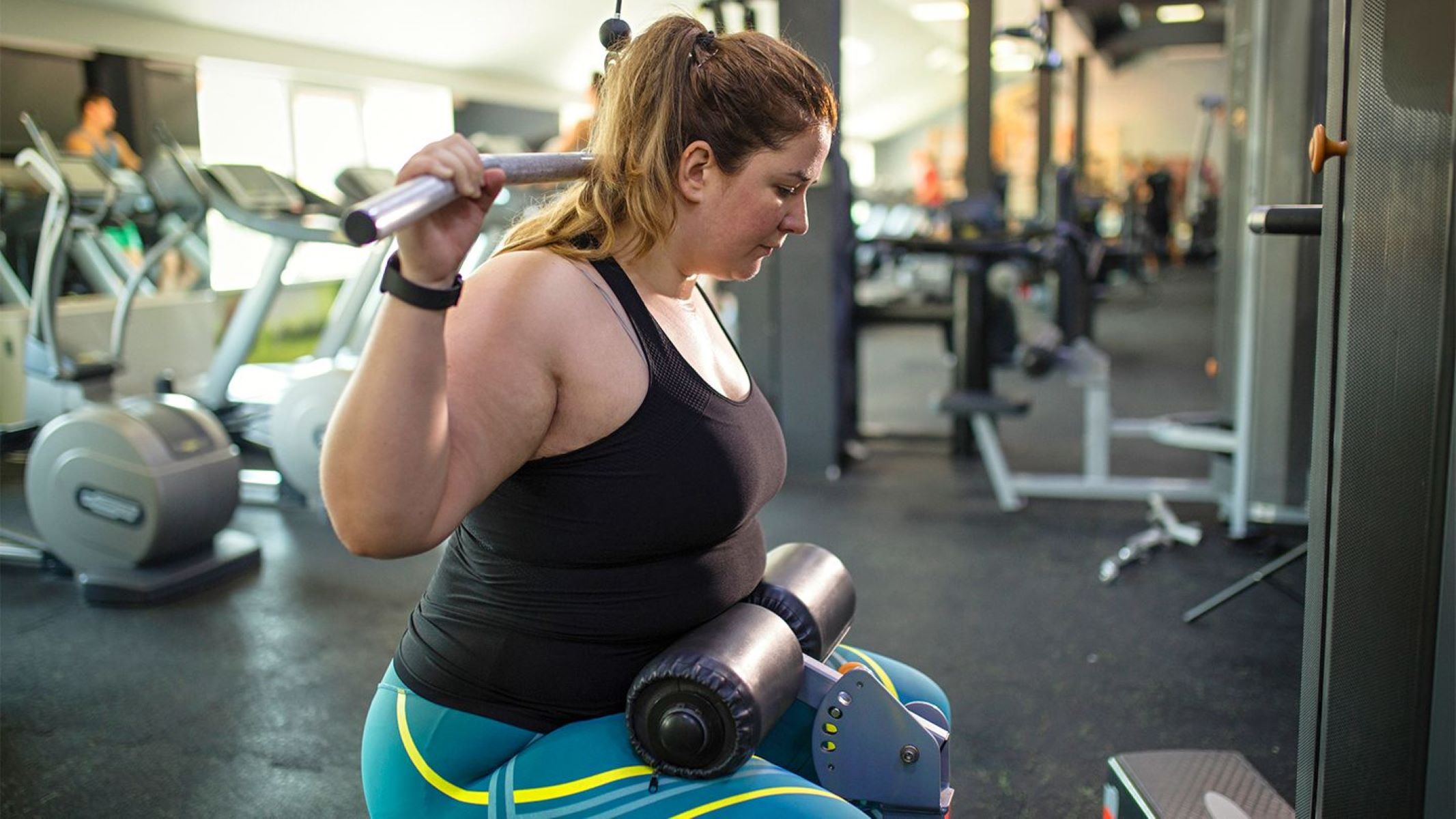Home>Misc>Featured>Which Of The Following Type(s) Of Aerobic Exercise Can Improve Cardiovascular Fitness?


Featured
Which Of The Following Type(s) Of Aerobic Exercise Can Improve Cardiovascular Fitness?
Modified: August 21, 2023
Discover the featured aerobic exercises that can enhance your cardiovascular fitness and elevate your overall wellbeing.
Introduction
Aerobic exercise is a key component of a well-rounded fitness routine, helping to improve cardiovascular health, increase endurance, and burn calories. Engaging in regular aerobic exercise not only boosts your physical fitness but also has numerous benefits for your mental well-being. When it comes to improving cardiovascular fitness, certain types of aerobic exercises are particularly effective. In this article, we will explore some of the most impactful aerobic exercises that can help boost your cardiovascular health.
Before diving into the specific types of exercises, it’s important to understand the concept of cardiovascular fitness. Also referred to as cardiovascular endurance, it is the ability of your heart, blood vessels, and lungs to efficiently deliver oxygen-rich blood to your muscles during sustained physical activity.
Regular participation in aerobic exercises helps strengthen your heart muscle, improve lung capacity, and enhance the efficiency of your circulatory system. As a result, your body becomes more adept at supplying oxygen and nutrients to your working muscles, enabling you to sustain physical activity for longer periods.
While any form of aerobic exercise can contribute to cardiovascular fitness, some types are particularly effective due to their high intensity and ability to elevate your heart rate. These types of exercises are known to improve your endurance, maximize calorie burn, and promote overall cardiovascular health.
High-intensity Interval Training (HIIT)
High-intensity Interval Training, or HIIT, has gained popularity in recent years for its time-efficient and effective approach to cardiovascular fitness. This type of exercise involves alternating between short bursts of intense activity and periods of rest or lower-intensity exercise.
HIIT workouts can be done with various activities, such as running, cycling, or bodyweight exercises. The key is to push yourself to your maximum effort during the high-intensity intervals, followed by recovery periods to allow your heart rate to come down before the next intense interval.
What makes HIIT so effective for improving cardiovascular fitness is its ability to elevate your heart rate quickly and keep it elevated for a significant amount of time. This challenges your cardiovascular system and enhances its capacity to distribute oxygen throughout your body efficiently.
Research has shown that HIIT can have a greater impact on improving cardiovascular fitness compared to moderate-intensity continuous exercise, such as steady-state cardio. HIIT not only increases your aerobic capacity but also helps burn more calories and fat during and after the workout. This is known as the “afterburn effect” or excess post-exercise oxygen consumption (EPOC), where your body continues to burn calories at an elevated rate even after you’ve finished exercising.
One of the advantages of HIIT is its flexibility. You can customize your HIIT workout by adjusting the duration and intensity of the intervals to suit your fitness level and preferences. Whether you’re a beginner or an advanced exerciser, HIIT can be adapted to challenge you and help you progress.
It’s important to note that HIIT is a demanding form of exercise and should be approached with caution, especially if you have any underlying health conditions or are new to high-intensity workouts. It’s recommended to consult with a healthcare professional or a certified fitness instructor before incorporating HIIT into your routine.
In summary, High-intensity Interval Training (HIIT) is a highly effective aerobic exercise for improving cardiovascular fitness. This form of training challenges your cardiovascular system, increases your aerobic capacity, and promotes calorie and fat burning. With its flexibility and efficiency, HIIT is a great option for individuals looking to maximize the benefits of their workout in a shorter amount of time.
Running
Running is a classic and accessible aerobic exercise that can significantly improve cardiovascular fitness. Whether you’re sprinting on a track or jogging through your neighborhood, running engages your entire body and elevates your heart rate, making it an excellent choice for enhancing cardiovascular health.
Running is a versatile activity that can be tailored to different fitness levels and goals. Beginners can start with brisk walking or slow jogging and gradually increase speed and distance over time. Advanced runners can challenge themselves with faster paces or longer distances to continue improving their cardiovascular fitness.
One of the main benefits of running is its impact on aerobic capacity. Regular running sessions force your heart and lungs to work harder, improving their efficiency in delivering oxygen to your muscles. As a result, your body becomes more efficient at using oxygen, allowing you to sustain physical activity for longer periods without getting fatigued.
Additionally, running helps strengthen your leg muscles, including your quadriceps, hamstrings, and calves. These muscles play a crucial role in supporting your body weight and propelling you forward during the running motion. As you build strength in these muscles, you’ll find it easier to maintain proper form and increase your running endurance.
Running also offers mental benefits. The rhythmic motion, fresh air, and freedom of being outdoors can help reduce stress, boost your mood, and improve overall mental well-being. It can serve as a form of mindfulness, allowing you to clear your mind and focus on the present moment.
When incorporating running into your fitness routine, it’s essential to start slowly and gradually increase your running volume or intensity to prevent injury. Warming up before each run and cooling down afterward can also help prevent muscle stiffness and soreness. Investing in a good pair of running shoes that provide adequate support and cushioning is crucial to maintain proper form and reduce the risk of injuries.
In summary, running is a highly effective aerobic exercise for improving cardiovascular fitness. It boosts aerobic capacity, strengthens leg muscles, and provides mental benefits. Whether you’re a beginner or an experienced runner, incorporating regular running sessions into your routine can have a profound impact on your cardiovascular health.
Cycling
Cycling is a low-impact aerobic exercise that offers a wide range of benefits, making it an excellent choice for improving cardiovascular fitness. Whether you prefer cycling outdoors or on a stationary bike, this activity is not only enjoyable but also highly effective in promoting cardiovascular health.
One of the key advantages of cycling is that it is a non-weight-bearing exercise, which means it puts less stress on your joints compared to activities like running. This makes it a suitable option for individuals with joint issues or those who are recovering from injuries.
During cycling, your leg muscles work in a repetitive motion, engaging your quadriceps, hamstrings, calves, and glutes. This consistent muscle engagement helps strengthen the lower body, contributing to improved overall fitness and endurance.
Cycling is also well-known for its cardiovascular benefits. Regular cycling sessions help elevate your heart rate, increasing blood flow and boosting oxygen delivery to your muscles, which strengthens your cardiovascular system. Over time, this leads to improved aerobic capacity, allowing you to sustain physical activity for longer durations without feeling exhausted.
Moreover, cycling allows you to easily control the intensity of your workout. By adjusting the speed, resistance, or terrain, you can vary the intensity to suit your fitness level or training goals. Whether you prefer a leisurely ride or an intense hill climb, cycling offers a versatile and customizable workout experience.
Another advantage of cycling is its accessibility. It can be done both indoors on a stationary bike or outdoors on roads, trails, or bike paths. Cycling outdoors gives you the added benefit of enjoying fresh air, changing scenery, and the freedom to explore new routes, which can contribute to a more enjoyable and satisfying workout.
When cycling outdoors, it’s important to prioritize safety by wearing a helmet, following traffic rules, and using proper hand signals to communicate with other road users. If using a stationary bike, make sure to set it up correctly for your body mechanics and adjust the resistance to match your desired level of challenge.
In summary, cycling is a versatile and accessible aerobic exercise that provides numerous benefits for improving cardiovascular fitness. It strengthens leg muscles, offers low-impact training, and allows for customizable intensity levels. Whether you choose to cycle indoors or outdoors, incorporating regular cycling sessions into your fitness routine can have a profound impact on your cardiovascular health.
Swimming
Swimming is a highly effective and enjoyable aerobic exercise that offers a multitude of benefits for cardiovascular fitness. Whether you’re a beginner or an advanced swimmer, incorporating swimming into your fitness routine can significantly improve your cardiovascular health.
Swimming is a full-body workout that engages multiple muscle groups, including your arms, legs, core, and back. The resistance of the water provides a gentle and effective form of resistance training, helping to build strength and endurance throughout your entire body.
One of the unique aspects of swimming is its low-impact nature, as the water supports a portion of your body weight, reducing stress on your joints. This makes swimming an excellent choice for individuals with joint issues or those recovering from injuries, as well as pregnant women or individuals with conditions that limit weight-bearing exercise.
Swimming is known for its ability to elevate your heart rate quickly and maintain it throughout the duration of the workout. The water’s resistance and the continuous movement required for swimming increase your heart rate, promoting cardiovascular fitness and improving overall endurance.
Additionally, swimming offers excellent cardiovascular benefits by improving lung capacity. The controlled breathing required in swimming helps you develop better respiratory function, allowing you to take in more oxygen during each breath and expel carbon dioxide more efficiently. This increased lung capacity translates to better overall cardiovascular performance.
Swimming is also a great exercise for reducing stress and promoting relaxation. The rhythmic nature of swimming, along with the water’s soothing properties, can provide a calming effect on the mind, helping to alleviate stress and improve mental well-being.
Whether you prefer swimming in a pool, a lake, or the ocean, it’s important to prioritize safety. If swimming in open water, make sure to be aware of the conditions, currents, and any potential hazards. Always swim in designated areas and follow any safety guidelines or recommendations from lifeguards or authorities.
In summary, swimming is a highly beneficial aerobic exercise for improving cardiovascular fitness. It provides a full-body workout, builds strength and endurance, and offers low-impact training. The combination of cardiovascular benefits, increased lung capacity, and stress reduction makes swimming an excellent choice for individuals of all fitness levels seeking to enhance their cardiovascular health.
Rowing
Rowing is a highly effective and engaging aerobic exercise that offers a wide range of benefits for cardiovascular fitness. Whether you’re rowing on a machine at the gym or in a boat on the water, this activity engages multiple muscle groups and elevates your heart rate, making it an excellent choice for improving cardiovascular health.
Rowing is a full-body workout that targets the muscles in your upper body, lower body, and core. The pulling motion engages your back, shoulders, and arms, while the pushing motion activates your legs and glutes. This synchronized movement allows for a complete muscle engagement, leading to improved strength, endurance, and overall fitness.
One of the key advantages of rowing is its low-impact nature. The smooth gliding motion of the rowing machine or the water eliminates the jarring impact on your joints that can occur with other forms of aerobic exercise like running. This makes rowing an ideal option for individuals with joint issues or those looking for a gentler form of cardiovascular exercise.
Rowing is also a highly efficient aerobic exercise, as it requires the use of a larger muscle mass compared to other activities. This leads to a higher energy expenditure, increased calorie burn, and improved cardiovascular conditioning. Rowing elevates your heart rate and challenges your cardiovascular system, helping to improve your endurance and stamina over time.
Furthermore, rowing promotes excellent cardiovascular health by improving your lung capacity. The controlled breathing technique used during rowing allows you to take in more oxygen and expel carbon dioxide efficiently. This increases your lung capacity, enabling your body to deliver more oxygen to your muscles during physical activity, enhancing overall cardiovascular performance.
Rowing workouts can be customized to fit different fitness levels and goals. Whether you prefer shorter high-intensity intervals or longer steady-state sessions, rowing allows for a versatile and adaptable workout experience. You can adjust the resistance on the rowing machine or vary your rowing pace and stroke rate to challenge yourself and continue progressing.
When using a rowing machine, it’s essential to maintain proper form to prevent injury and maximize the effectiveness of the exercise. Make sure to engage your core, maintain a tall posture, and drive through your legs while smoothly pulling the handle toward your body. If rowing on the water, always follow safety guidelines and pay attention to the currents, weather conditions, and any water traffic.
In summary, rowing is a highly effective aerobic exercise for improving cardiovascular fitness. It engages multiple muscle groups, offers low-impact training, and promotes increased lung capacity. Whether you choose to row on a machine or in a boat, incorporating regular rowing sessions into your fitness routine can have a significant impact on your cardiovascular health and overall fitness level.
Jumping Rope
Jumping rope is a versatile and effective aerobic exercise that can greatly improve cardiovascular fitness. It is a simple and accessible activity that can be done anywhere, making it a convenient option for individuals of all fitness levels.
Jumping rope involves the repetitive motion of jumping over a rope while maintaining a quick pace. This movement engages multiple muscle groups, including your legs, core, and upper body. As a result, it provides a comprehensive full-body workout that can help build strength, endurance, and cardiovascular fitness.
One of the key benefits of jumping rope is its ability to elevate your heart rate quickly. The continuous jumping motion challenges your cardiovascular system and increases your heart rate, leading to improved cardiovascular endurance over time. Regularly incorporating jumping rope into your fitness routine can help strengthen your heart and improve its ability to pump blood more efficiently.
In addition to cardiovascular benefits, jumping rope also helps improve coordination, balance, and agility. The rhythmic and coordinated nature of the exercise requires you to synchronize your movements, enhancing your overall motor skills. This can have a positive impact on your performance in other physical activities or sports.
Jumping rope is a high-impact exercise, so it’s important to take precautions to prevent injury. It is recommended to wear proper athletic shoes with good cushioning to absorb the impact on your joints. Start with a slower pace and gradually increase your speed and intensity as your fitness level improves. It’s also essential to maintain proper form, keeping your knees slightly bent, your core engaged, and your landing soft to minimize the stress on your joints.
One of the great advantages of jumping rope is its versatility. You can easily customize your workout by varying the intensity, duration, or jumping techniques. For example, you can incorporate interval training by alternating between high-intensity bursts of fast jumping and periods of slower, recovery jumps. This adds variety to your routine and allows you to continue challenging yourself as you progress.
Jumping rope is not only an effective aerobic exercise but also a fun and enjoyable activity. It can be done alone or with others, making it a social and engaging way to boost your cardiovascular fitness. Whether you’re a beginner or an experienced jumper, the simplicity and accessibility of jumping rope make it a great addition to your fitness routine.
In summary, jumping rope is a versatile and effective aerobic exercise that can significantly improve cardiovascular fitness. It engages multiple muscle groups, elevates your heart rate, and enhances coordination and agility. By incorporating jumping rope into your workouts, you can enjoy a fun and challenging way to improve your cardiovascular health and overall fitness.
Step Aerobics
Step aerobics is a popular and dynamic aerobic exercise that effectively improves cardiovascular fitness while also providing a fun and energetic workout experience. This form of exercise involves using a raised platform, known as a step, to perform a series of choreographed movements.
Step aerobics focuses on constant movement, rhythm, and coordination. The combination of aerobic exercise and rhythm creates a high-energy cardiovascular workout. By elevating your heart rate and maintaining it throughout the session, step aerobics helps improve your cardiovascular endurance.
One of the key benefits of step aerobics is its ability to engage multiple muscle groups simultaneously. The exaggerated stepping movements target the muscles in your legs, including your quadriceps, hamstrings, and calves, while also engaging your glutes and hip muscles. The upper body is involved as well, as you move your arms in coordination with the stepping patterns. This comprehensive muscle engagement helps promote strength, endurance, and overall fitness.
Step aerobics offers versatility in terms of intensity and complexity. Beginners can start with simple step patterns and gradually progress to more challenging routines as their fitness level improves. The height of the step can also be adjusted to increase or decrease the intensity of the workout. This allows individuals of all fitness levels to customize their step aerobics workouts to suit their needs and goals.
Another advantage of step aerobics is its accessibility. It can be done in a group fitness class or in the comfort of your own home with minimal equipment. All you need is a sturdy step platform and comfortable workout attire. Step aerobics videos and online tutorials are readily available, providing guidance and inspiration for your workouts.
As with any form of exercise, it is important to use proper form and technique during step aerobics to prevent injury. Start with a warm-up to prepare your muscles for the workout, and pay attention to your positioning on the step platform to ensure stability and balance. If you experience any pain or discomfort, modify the movement or consult with a fitness professional for guidance.
Aside from the physical benefits, step aerobics also offers mental benefits. The energizing music, rhythmic patterns, and group atmosphere (if participating in a class) can boost your mood, relieve stress, and enhance motivation. The social aspect of step aerobics classes can also provide a sense of community and support, making the workout more enjoyable and sustainable.
In summary, step aerobics is an engaging and effective aerobic exercise that improves cardiovascular fitness. It targets multiple muscle groups, offers versatility in intensity and complexity, and provides mental benefits. Incorporating regular step aerobics workouts into your fitness routine can help you achieve your cardiovascular goals while enjoying an energizing and fun exercise experience.
Dancing
Dancing is a highly enjoyable and versatile aerobic exercise that offers numerous benefits for cardiovascular fitness. Whether you’re moving to the rhythm of music in a dance class, at a club, or simply in the comfort of your own home, dancing provides a fun and effective way to improve your cardiovascular health.
Dancing involves continuous movement, rhythm, and coordination, making it a fantastic cardiovascular workout. Whether it’s salsa, hip-hop, ballet, or any other dance style, the combination of various steps, turns, and jumps requires sustained effort and elevates your heart rate. This sustained elevation challenges your cardiovascular system, improving your endurance and overall cardiovascular fitness.
One of the key advantages of dancing is its ability to engage multiple muscle groups throughout the body. Different dance styles require the activation of various muscles, including the legs, core, arms, and back. The dynamic and coordinated movements help strengthen and tone these muscles, enhancing overall fitness and stability.
Dancing also offers the benefit of improved coordination and balance. Learning intricate dance steps and performing them in time with the music requires focus and concentration. Through regular dancing, you can improve your coordination skills, enhance your proprioception, and enhance your overall motor skills. These skills can benefit you not only in your dance routine but also in other physical activities and daily tasks.
Besides the physical benefits, dancing provides a range of mental and emotional benefits. Dancing can be a form of self-expression and a means to release stress and tension. The enjoyment of music, the social aspect of dancing with others, and the sense of accomplishment when mastering a new move can boost your mood, reduce anxiety, and promote overall mental well-being.
Dancing is a versatile activity that can be adapted to suit different fitness levels and preferences. Whether you choose to attend a dance class, participate in a dance fitness program, or simply dance freely at home, you have the flexibility to choose the intensity and style of dance that best suits your needs.
No matter your skill level, dancing can be a low-impact or high-impact exercise, depending on the tempo and style. It’s important to listen to your body and start slowly, gradually increasing the intensity and duration of your dance sessions over time. Proper footwear and suitable dance surfaces are also essential to optimize comfort and prevent injury.
In summary, dancing is a highly enjoyable and effective aerobic exercise for improving cardiovascular fitness. It engages multiple muscle groups, enhances coordination and balance, and offers mental and emotional benefits. Whether you’re a seasoned dancer or a beginner, incorporating regular dance sessions into your fitness routine can have a significant impact on your cardiovascular health and overall well-being.
Conclusion
Aerobic exercise plays a crucial role in improving cardiovascular fitness, and there are various types of exercises that can help achieve this goal. High-intensity interval training (HIIT) is a powerful option for those seeking an efficient and effective workout approach. Running and cycling are classic aerobic exercises that provide excellent cardiovascular benefits while allowing for customization in intensity and duration.
Swimming and rowing are low-impact exercises that engage multiple muscle groups, promote cardiovascular health, and offer the added benefit of increasing lung capacity. Jumping rope provides a versatile and portable workout, engaging the entire body while increasing heart rate efficiently.
Step aerobics is a fun and energetic exercise that targets multiple muscle groups and improves cardiovascular endurance. Dancing, with its rhythmic movements and variety of styles, not only benefits cardiovascular fitness but also enhances coordination, balance, and overall well-being.
When incorporating any of these aerobic exercises into your fitness routine, it’s essential to start slowly, listen to your body, and gradually increase the intensity and duration to prevent injury. Proper form, appropriate footwear, and adherence to safety guidelines are critical elements to ensure a safe and effective workout.
Remember, aerobic exercise is not only about improving cardiovascular fitness—it’s also about enjoying the process. Choose an exercise that you find enjoyable and suits your preferences and fitness level. By finding joy in your workouts, you’re more likely to stay consistent and reap the long-term benefits for your cardiovascular health.
So, lace up your running shoes, grab your jump rope, or join a dance class—there are countless ways to improve your cardiovascular fitness through aerobic exercise. Choose one that resonates with you, allow yourself to have fun, and watch as your cardiovascular health soars to new heights.









